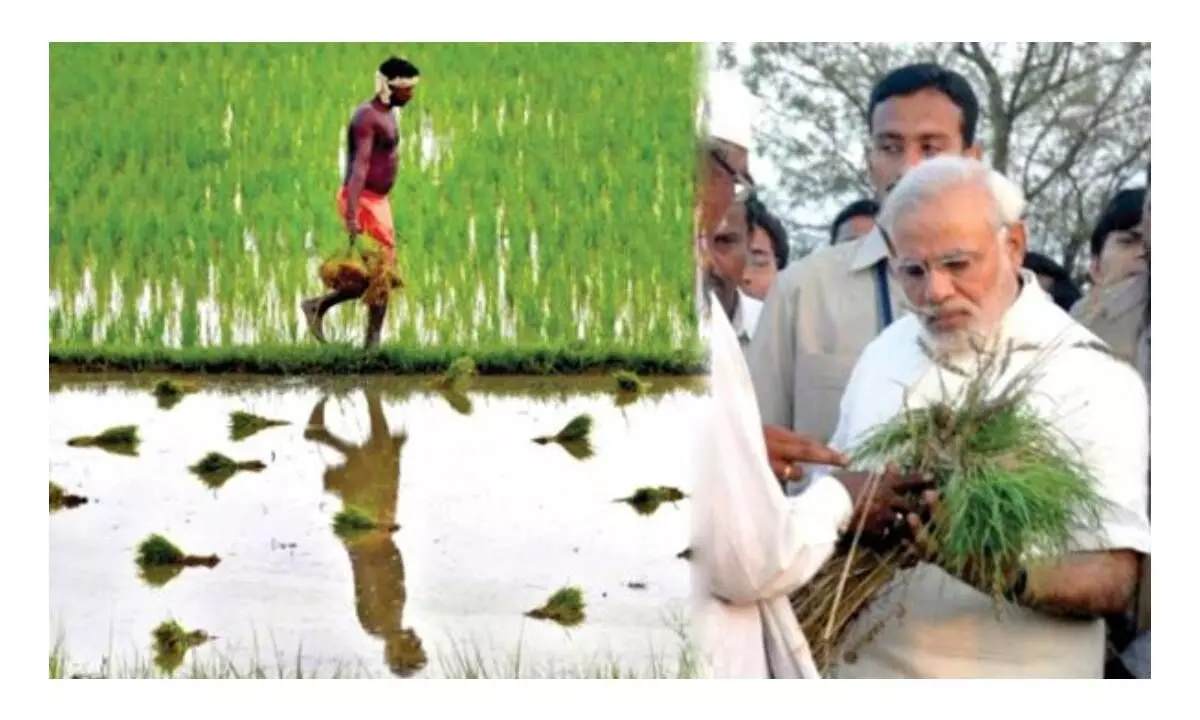Farmers’ protest 2.0 ill-timed, still central government should address their concerns
Despite all India shining stories, the country’s agriculture sector is in real distress with the growth rate declining
image for illustrative purpose

All is not well with the global economy. The United Kingdom (UK) slipped into recession as its economy contracted 0.3 per cent during October-December 2023. That means that its economy was in negative zone for the second consecutive quarter as it de-grew by 0.1 per cent in the preceding three months i.e. July-September 2023. An economy is technically in recession if it contracts for two quarters, or six months in a row.
But the UK is not alone here. Japan, one of Asia’s giant economies, is also in recession. Its economy shrank by 0.4 per cent in October-December 2023 after a higher 3.3 per cent slump in the preceding three months. In the process, the island-nation lost its coveted third largest economy tag to Germany. Japan is now in fourth place, just one above India. Interestingly, Germany is also not in good stead as reports indicate that Europe’s largest economy is also staring at recessionary streaks. Around 14 countries saw their economies contracting during July-September 2023. Several of them might already have slipped into recession. We will know that once their December quarter GDP numbers are out.
Furthermore, the US, the world’s largest economy, also seems to be facing some problems as people are finding it very difficult to get jobs. This joblessness is more pronounced in its technology sector.
China, which clocked 5.2 per cent economic upswing in 2023, is also expected to hit the slow lane in 2024 with the International Monetary Fund (IMF) forecasting a gross domestic product (GDP) growth of 4.6 per cent for the communist country this year. Stress in the property sector is expected to take a toll on its economy even next year.
Though the IMF, in its recent outlook, projected 3.1 per cent upswing for the global economy in 2024, other global agencies gave a more pessimistic estimation, indicating a bumpy ride for the world economy.
But how will India fare? Despite this gloomy situation globally, India is expected to do well this year as well. While the Reserve Bank recently pegged India’s growth for FY25 at 7 per cent, IMF forecast 6.5 per cent in its recent projections.
Last week, World Economic Forum President Borge Brende painted a rosy picture about the Indian economy. According to him, it will soon emerge as the world’s third largest economy before becoming a $10-trillion GDP, nearly a three-fold jump from the current size of $3.5 trillion. He further said the world had shown tremendous interest in India at this year’s Davos summit and the momentum will continue.
US brokerage major Jefferies also predicted last week that India would become a $5-trillion economy by 2027, thereby overtaking Japan and Germany. It also said India would consistently grow at more than six per cent over the next five years. Digital economy seems to be the game changer for India while rising foreign director investments (FDIs) are also helping the country’s cause, when it comes to economic growth.
Nevertheless, such a positive perception augurs well for the Narendra Modi government at the Centre at a time when the 2024 General Elections are round the corner. But despite all the India shining stories, the country’s agriculture sector is in distress. There is no doubt about it. This sector clocked 3.5 per cent growth in the first quarter (April-June 2023) of the current fiscal before declining to a measly 1.2 per cent in July-September 2023. Overall, GDP growth was over seven per cent during those two quarters. These numbers reveal the dismal state that the country’s agriculture sector is in.
No surprise that a section of farmers is on a warpath now. Described as farmers’ protest 2.0, this agitation is currently on near Delhi borders. However, this is clearly an ill-timed agitation as farmers began their stir after the 17th Lok Sabha wound up its business and paved the way for the General Elections. Farmers should have started this agitation before the commencement of the Budget session if they did have any political goals. That could have given some positive results as the first agitation did a couple of years ago. But that doesn’t mean that the central government should not take their demands seriously now.
Of course, agriculture contributes less to the Indian economy now compared to three decades ago.
In the financial year 1990-91, the agriculture sector accounted for 35 per cent of the total gross value added (GVA) of the Indian economy. It came down to 15 per cent in FY23. But still a large chunk of the population, especially in rural areas, relies on farming for their sustenance. So, it is imperative for the central government to spur decent growth in the agriculture sector.
As Modi is widely expected to score a rare hat-trick as the country’s Prime Minister in the 2024 General Elections, he should take up the task of reviving the agriculture sector as his first priority in his third term.
Two key elements that will help the farmers are increase in agriculture yield and remunerative prices for their produce. The central government should initiate steps to achieve improvements in these two key areas. Will Modi do that if he is voted to power remains the million dollar question!

